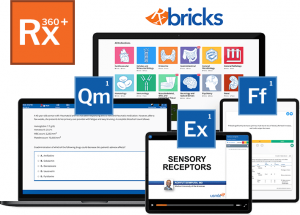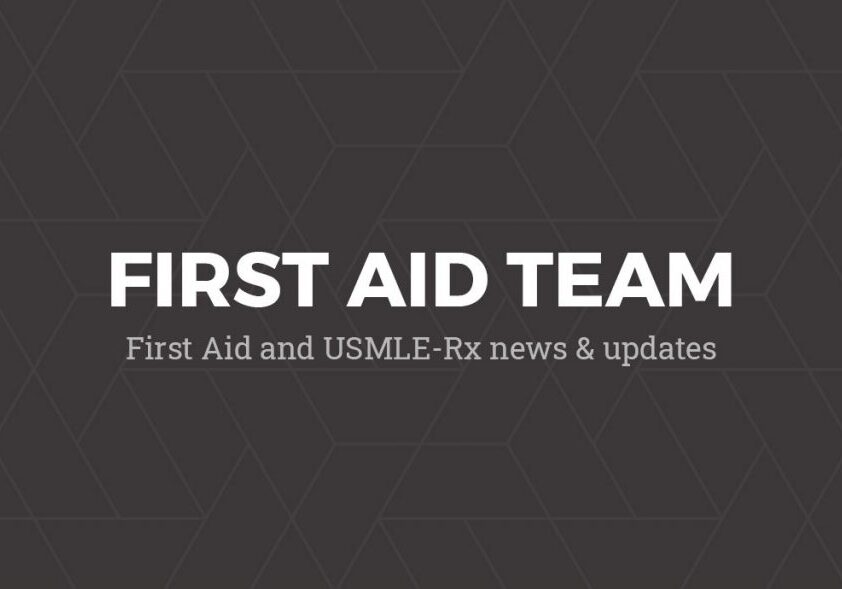5 Ways to Study Neurology with USMLE-Rx

By Ravish Amin
Studying neurology with USMLE-Rx is a great way to review basic concepts like mental status, cranial nerve functions (including vision), strength, coordination, reflexes, and sensation.
If you’re getting started, we recommend that you begin by using Rx Bricks when exploring high yield topics such as:
- Dementia
- Migraine, Cluster, and Tension Headaches (accessible for free)
- Seizures and epilepsy
- Pain mechanisms (accessible for free)
- Neuromuscular junction disorders (accessible for free)
After you’ve laid the foundation in Rx Bricks, you can review and reinforce your knowledge with First Aid, Step 1 Qmax, Flash Facts, and Express Videos.
To score higher on exams, use USMLE-Rx early and take frequent tests in Qmax, including simulated USMLE-style exams and the curated self-assessment exams.
Try these tips to help you study neurology with USMLE-Rx:
1. Neuroanatomy with Rx Bricks, Flash Facts, Express Videos, and Qmax – Rx Bricks has an entire section devoted to the structure and function of the brain, the cranial nerves, the spinal cord and peripheral nerves, and the special senses. The bricks are loaded with diagrams and images of the brain, which you can also review in Flash Facts and assess yourself on in Qmax.
Flash Facts includes high yield facts on neuroanatomy, which all include content as it appears in First Aid for the USMLE Step 1. You can also use Study Stream’s spaced repetition function to ensure that you absorb and remember this material over the long run.
QMax has corresponding Q&A with detailed explanations for concepts such as the central and peripheral nervous systems. The USMLE-Rx mobile apps (for iOS and Android) also provide convenient ways to review facts on the go. For example, review cranial nerves (Glossopharyngeal nerve, CN IX) and study corresponding anatomical locations and functions (carotid baroreception, taste from the posterior tongue, and swallowing).
Start your free trial of USMLE-Rx today!
2. Review the Express Videos for Neurology – Review Express Videos and take notes in First Aid for the USMLE Step 1. This method works because it combines lectures and First Aid facts into one, convenient study resource. Focus on pathophysiology, diagnosis, and treatment of diseases. Review other sources such as Netter’s Atlas of Human Neuroscience, Neuroanatomy: An Atlas of Structures, High-Yield Neuroanatomy, and PreTest Neuroscience.
3. Analyze Flash Facts and QMax results – USMLE-Rx provides detailed feedback of your performance in Flash Facts and QMax. Spend extra time reviewing your score for Flash Facts because it provides explanations and insight about what to study next.
4. Review psychiatry and neurological exams – Both psychiatry and reviewing the neurological exam are important while studying neurology because concepts in neurology require connecting the dots from the physical exam to neuroanatomy. For example: neurological diseases often have psychiatric manifestations (i.e., mood and cognitive dysfunctions in Alzheimer’s disease). USMLE-Rx provides Bricks, Qmax questions, videos, and flashcards to help you review psychiatry. You can also review a basic neurological exam online at http://library.med.utah.edu/neurologicexam/html/home_exam.html
5. Start in tutor mode and graduate to timed test mode – Practice often and review the answers and explanations of high yield concepts frequently (Upper motor neuron (UMN) vs. lower motor neuron (LMN)). Qmax tests are designed to work just like the USMLE and NBME exams, utilizing test-day software and encouraging you to focus on content.
What other ways to study neurology would you recommend to med students?





Pingback: How to make an iPhone App
Pingback: arzneimittel